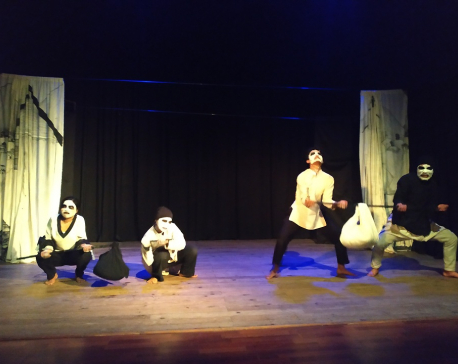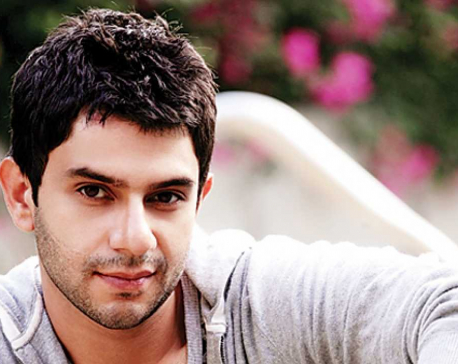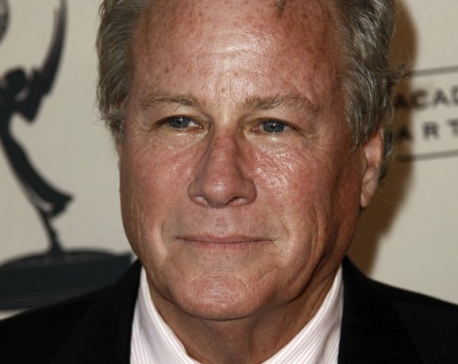
OR

When his film “Mataan” won Best Picture in the National Film Awards in the year 2015, Keshab Rai thought back to his younger days when a casting agent told him he would never make it in the movie industry. He realized then how far he had come. An actor, screenwriter and producer, Keshab Rai (‘Yups’ as he is affectionately called) has been in the Nepali movie industry for nearly a decade now. He has acted in around two dozen movies, worked in several theater productions and written scripts for a number of them as well. Among a cluster of titles, “Gham Pani”, “Mataan” (which he wrote the screenplay for and was the main lead in), “Bhairav”, the theater version of “Talakjung vs. Tulke” are some memorable projects. His short film “Phunglam” will be released on Chaitra 22.
Here, he speaks to The Week’s Rakshya Khadka about his decade long career, the Nepali movie industry at present and the power, he believes, movies hold in inspiring change and thinking.
Growing up in a remote area of Solukhumbu, how did you develop a fondness for movies and performance?
I was a dancer. I loved performing before people, loved the attention and the adulation I received. When I was growing up, there weren’t any theaters but we would have these “videos” of people acting and they would have these dramatic storylines. I would watch them religiously, riveted by what was playing before me. So I came home and tried to emulate these actors (who later I found out were Rajesh Hamal and Bhuwan KC). My friends found it very amusing and encouraged my acts. Eventually we wrote our own stories and staged short skits for people in the village. Then I decided that I’d come to Kathmandu and try to become an actor myself. I had made the decision to become an actor long before I even understood the concept of a career.
In your early years, what about movies and playing characters was it that appealed to you?
I think it was the stories themselves that called out to me. Stories of human experiences that I believe ought to be shared and celebrated. I’m an emotional person, real stories speak to me, and people touch me. Characters are vessels for representation. They can be either you or me. Done right, they can change us. This awareness and this power, that I realized movies possessed, came to me very early on in life.
According to your understanding and experience what power do movies, theater and stories hold?
Movies have power they can bring about a shift in an entire school of thought. Older movies showed great tragedies all the time. To an observer it would seem as if Nepal was just that – a nation of tragedy. It seemed like that to me too at one point. But I also knew that was wrong. There was merriment, laughter and a sense of freedom in the life I knew of. The portrayal was wrong then but it did make me wonder if the tragedy was the life people knew in other parts of the country. In that way, movies got me thinking. In Nepal’s context, movies are also an index, a repository of Nepali culture.
What is your new film, “Phunglam” about?
I belong to the Rai community and I fear that a significant lack of documentation on the indigenous origins and practices of the Rai people will result in the world forgetting an entire culture. I don’t want Rai people to just identify with being Rai. There are subdivisions among the Rai people too: Nachhiring, Bahing, Wambule, Dumi and more. I am Bahing myself and our cultural dresses differ even among the subdivisions. This movie is about exploring that, understanding Rai people both as an insider and as an observer. Like most of my films, this one is very real to me and I hope it can be the same to those who view it as well.
As a filmmaker and as an actor, what do you have to say about the Nepali movie industry?
I would say we are just starting out. Although we have been around for quite some time, we never matured with our content and our approach, until now. I think we were misguided. Filmmakers assumed that the formula that worked in a certain country would work in ours. But films are stories based on realities. And the reality of Nepal is different to the reality of any other country. In an attempt to draw the same explosive responses, filmmakers in the earlier days attempted to recreate not just the plotlines but also cultural contexts. But movies are an artistic reflection of what is around you and we couldn’t project our own lives in the earlier days. But it’s definitely changing now. I believe the movie “Loot” was very impactful in that regard. Today, there are two kinds of movies, one before there was “Loot”, the other after “Loot”. The audiences are seeking original creations too. We are moving forward but at what pace and to what impact are yet to be seen.
Looking back how would you say your career has been like?
It seems extraordinary and very mundane at the same time. I started off knowing nothing, just that I loved movies and performing. On my first audition, the casting director asked me to impersonate Rajesh Hamal. As much as I respect him, I wasn’t auditioning to replace him as a double. I told the director that I was standing before him as Keshab Rai and not as Rajesh Hamal. He told me back then that I should let go of any fantasies of becoming an actor, that I didn’t have it in me to act. I started with theater and picked my way up gradually, trying my hand at this and that. Some movies did well, some not very much. But I’ve grown and learnt from it all. Not bad for a kid who was told he could never act, wouldn’t you say?
You May Like This

Pijada ki Chari: Freeing the caged bird
When power seeps through the base of Putali village, the once-a-merry-land transforms into a center of chaos and disorder. ... Read More...

Knew it'd be treated with sensitivity: Arjun on homosexuality in 'Made in Heaven'
Actor Arjun Mathur says he was not afraid to play a gay character in ‘Made in Heaven’ as he trusted... Read More...

Actor John Heard, of ‘Home Alone’ movies, dies at 71
NEW YORK, July 23: Actor John Heard, whose many roles included the father in the “Home Alone” series and a corrupt... Read More...




Just In
- Govt receives 1,658 proposals for startup loans; Minimum of 50 points required for eligibility
- Unified Socialist leader Sodari appointed Sudurpaschim CM
- One Nepali dies in UAE flood
- Madhesh Province CM Yadav expands cabinet
- 12-hour OPD service at Damauli Hospital from Thursday
- Lawmaker Dr Sharma provides Rs 2 million to children's hospital
- BFIs' lending to private sector increases by only 4.3 percent to Rs 5.087 trillion in first eight months of current FY
- NEPSE nosedives 19.56 points; daily turnover falls to Rs 2.09 billion















Leave A Comment